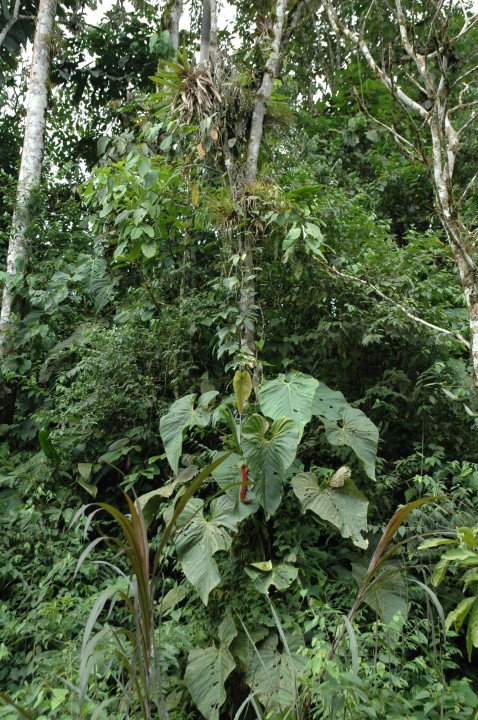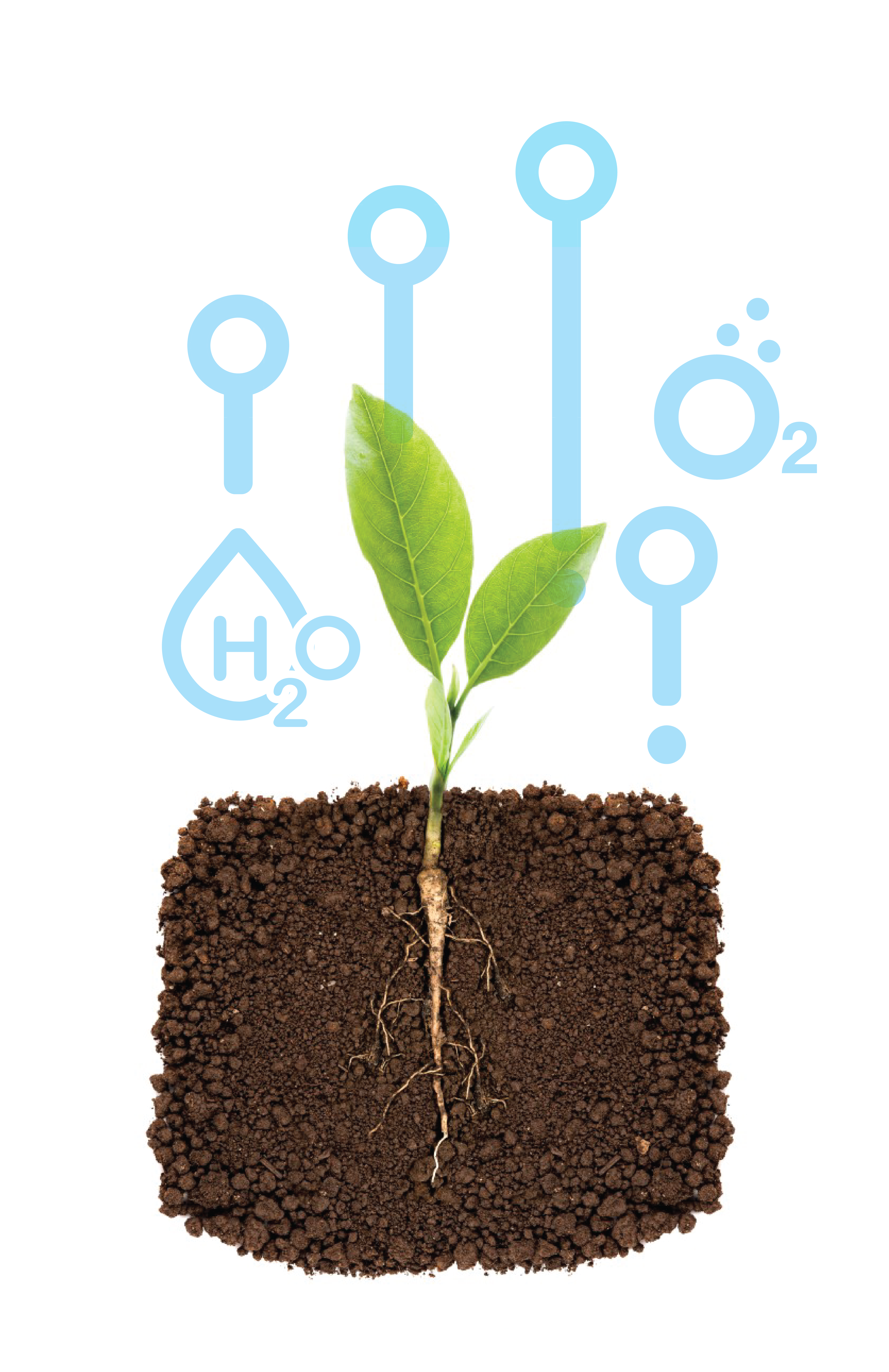
S ri Lanka’s country statement to the 21st Conference of the Parties (known as COP21) to the 1992 United Nations Framework Convention on Climate Change held in Paris in 2015 stated, “We are aware that the critical Ecosystem services such as production of Oxygen, sequestering of Carbon, water cycling and ambient cooling is carried out by the photosynthetic component of biomass. This is being lost at an exponential rate, due to the fact that these Ecosystem Services have not been valued, nor economically recognized. We would request the Intergovernmental Panel on Climate Change (IPCC) to examine the value of photosynthetic biomass.” The most critical and valuable material in maintaining the life support system of the planet is its photosynthetic biomass. Yet this material has been conspicuously under-appreciated and unvalued to date. The growth of the current carbon market in addressing climate change provides real benchmarks and suggests astounding market opportunities. The Analog Forestry system of farm based environmental restoration emerges as a promising technology to help capitalize photosynthetic biomass. Photosynthetic biomass performs the act of primary production, the initial step in the manifestation of life.
The biomass so termed has the ability to increase in mass through the absorption of solar or other electromagnetic radiation while releasing oxygen and water vapor into the atmosphere. Respiring biomass is that component of living biomass that uses the output of primary production to make the complicated biological patterns of life; it consumes oxygen to power its functions and does not have photosynthetic functions itself. This distinction would seem to be fundamentally important when assessing the value of biomass that is being addressed. The consideration of biomass contributes to terrestrial primary production as a distinct biomass pool is urgent. As outlined above, it is only photosynthetic biomass that powers carbon sequestration, carbohydrate production, oxygen generation and water transformation, i.e. all actions essential for the sustainability of the life support system of the planet. The photosynthetic biomass in terrestrial ecosystems is largely composed of the leaves of vegetation. While the photosynthetic component of marine ecosystems are comprised mostly of marine algae and phytoplankton. In terrestrial systems, it is the leafy component that contributes to primary production.

The sheer power of operation of the terrestrial photosynthetic system is seen when the volume of water released from photosynthetic biomass is considered, at a water release rate of 100:1, where over 100 molecules of water are released for each molecule of carbon dioxide absorbed by the leaf. The quantity of water released annually by forests and grasslands are like aerial rivers cycling about 6,250 billion tons of water into the atmosphere per annum. This quantity of evaporative water not only greatly influences local cooling events, but also contributes to the distribution of heat in the atmosphere. One ofe most significant consequences of transpiration by terrestrial vegetation is the “cleaning” effect on groundwater, releasing round water freed of the chemical pollutants that it was once burdened with. This cleaning function is hardly recognized nor evaluated. The oxygen generation function too is taken for granted but in the 20th century humanity has pumped increasing amounts of fossil carbon dioxide into the atmosphere by burning the carbon stored in coal, petroleum and natural gas. In the process, we’ve also been consuming oxygen and destroying plant life, cutting down forests at an alarming rate and thereby short circuiting the cycle’s natural rebound. We’re artificially slowing down one process and speeding up another, forcing a change in the atmosphere.
It eems imperative that a real value be placed on photosynthetic biomass; initial computations can begin by considering the current values suggested for the global market for similar functions. The estimated value of the carbon market was in excess of $125 billion in 2008. Thus even if we consider as current, the value of $125 billion that has been placed on containing limate change, the value of photosynthetic biomass can now be addressed. Assuming that the market would pay at least the value of controlling climate change to provide oxygen and clean water, the 93.1 billion tons of photosynthetic carbon currently in stock would be roughly worth about $1.35 per kilogram. This photosynthetic biomass, often considered to be too temporal in accounting for carbon sequestering, is actually the most valuable component. Slowing down the loss of global terrestrial photosynthetic biomass stock is not an option – it is a critical need. A massive investment must go towards incrementing the global photosynthetic biomass stock. The potential value of this stock can also attract the investment to develop market growth. A discussion of the models of high utility and high photosynthetic productivity is urgent. The recognition and evaluation of photosynthetic biomass must become a primary driver of the restoration processes discussed above. It can energize the restoration of biodiversity and the restoration of environmental services.
For management purposes, the photosynthetic biomass of a natural ecosystem has to be seen as a continuum of native species from the early seral stages represented by annuals and short lived species, to shrubs and bushes, to pioneer trees, to the mature tree dominated, old growth forest. In restoration methodologies like Analog Forestry where each stage is encouraged to carry its full complement of photosynthetic biomass, the management plans address the generation and maintenance of the optimal levels of photosynthetic biomass in each seral stage and gain the corresponding value. It is a fact that the sustainability of oxygen production is being endangered by the fossil fuel driven economy. The expansion of fossil-based industry and farming at the expense of vast regions of forests and seas not only destabilizes the atmosphere by accelerating global warming and thereby affecting the performance of chlorophyll, but also removes the very basis of life by burning the biologically created oxygen without paying for its replacement.
The signs are all around. A recent study on the levels of oxygen in the ocean found that the oceanic oxygen levels decreased by 2% over the last 50 years. On land, the font of oxygen are the leaves of trees. Another study published in the journal Nature suggests that 15 billion trees are cut down each year and the global tree count has fallen by 46% since the beginning of human civilization. Considering that a tree produces 120 kg of oxygen each year this represents a massive loss. But can we change the current relationship? Can we recognize the value of Primary Ecosystem Services (PES) provided by these trees and assign a value to it?
After many years of research, a Sri Lankan company, Earthrestoration, has developed a system to invest in a facilitate the growth of the market in PES. It is such activity, like restoring our ecosystems and using it to adapt to climate change, that will change the destructive road we have been placed on in the name of “development” and place us on a better path to adapt to the oncoming climate crisis. Climate change is real, the reason for it is “development” based on fossil energy. We have been fooled into believing that greed is development and now we and our children will have to pay the price of this folly, but pointing fingers at the authors of this crisis will not help. We have to take responsibility for what we take out of our Global Commons and make sure we replace what we use.
All of a sudden both the individual and society become disinterested observers. A lot of information is generated on how to perceive and understand the problem.
READ MOREWe know that the mean temperature will rise, but the speed of that increase may be much more than the Intergovernmental Panel on Climate Change (IPCC) has computed.
READ MOREWhere Carbon Dioxide combine with water and powered by sunlight produces the solid organic matter (Carbohydrate) and the free molecular Oxygen.
READ MOREThreat is being constantly amplified by the actions of the man. The actions of modern technological man have helped bring this threat very close to becoming real for us on this planet of Earth.
READ MORE